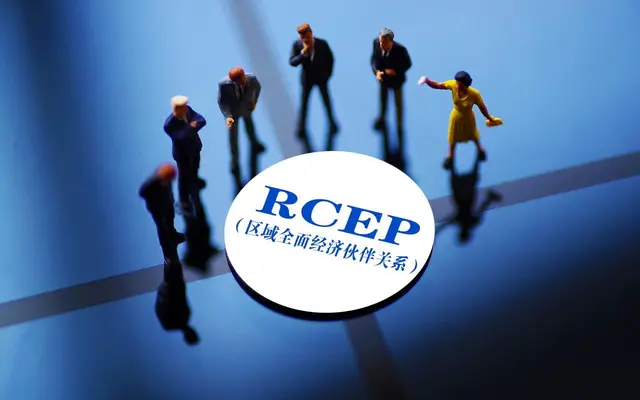By writer Ajith D Perera
In November 2020, the Regional Comprehensive Economic Partnership (RCEP) was signed against the backdrop of global pandemic among 10 Southeast Asian countries such as Brunei, Cambodia, Indonesia, Laos, Malaysia, Myanmar, the Philippines, Singapore, Thailand, Vietnam together with their FTA partners such as South Korea, China, Japan, Australia and New Zealand. Though not as comprehensive and without cutting tariffs as deeply as other FTAs, the trade bock includes larger economies and its sheer size notably inclusion of China, which already has a considerable influence on Gross Domestic Product (GDP) of RCEP members. “Does RCEP is a substitute for much talked Trans Pacific Partnership (TPP) ? In technical terms, the answer is certainly “No” but many believe the total market size and more flexible rules of origin will make a significant impact on world trade. Commenting on the trade deal Chinese Premier Li Keqiang said this brought a ray of light and hope amid the clouds.
For china, this is a notable achievement since they can easily expand their trade influence from existing multilateral trade agreements such Asia Pacific Trade Agreement (APTA) to a more influential regional multilateral trade pact with a large geographical coverage. Why RCEP received more attention of the world than any other trade agreement?
(a)Members of the RCEP already do well in terms of trade and make up nearly a third of the world’s population (2.1 billion people) and account for 29% of global gross domestic production.
(b)The new free trade bloc will be the biggest, surpassing both the US-Mexico-Canada agreement and the European Union.
(c)The RCEP consists of 20 chapters, which include investment-friendly clauses such as investor aftercare, dispute resolution, and intellectual property protection rights instilling further confidence to RCEP investors and has focused on SME’s as well.
In fact, global trade war produce winners, losers, and that has no exceptions for Trade Agreements. So who will be the losers when RCEP works? The answer might be India, which also engaged in the initial negotiations but pulled out later over concerns that lower tariffs could hurt local producers. The question is that has India sensed early warning signals? Only time can prove it. However, a section of Indian industries expressed their reservations about not joining the pact and has felt that being part of RCEP would have allowed the country to enter into a huge market. It’s good to remember the famous quote of Chanakya Indian philosopher and economist (350-275 BCE) that “learn from the mistakes of others you can’t live long enough to make them all your selves”.
RCEP is seen by many as an extension of China’s influence in the region. However, the deal is likely to immensely benefit not only China but Japan and South Korea as well. RCEP liberalization of Tariff would help China export more to Japan which was subject to most favored nation tariffs and help liberalization of key sectors of China-Korea trade under their bilateral free trade pacts.
The Belt and Road initiative (B&R) is the reincarnation of ancient land and sea route used by Chinese traders 2500 years ago to reach West, This route was later named as silk route by famous German traveler and scientist Baron von Richthofen in 1877. The B&R initiative provides the strategic thrust for China to extend the economic cooperation not only to east and to south Asia but finally to reach Europe while helping least integrated SAARC countries like Sri Lanka which are struggling to uplift its economies and the quality of life through economic cooperation.
In January 1952, even before diplomatic relations were established, China and Sri Lanka inked the famous Rice –Rubber deal. Sri Lanka also supported China’s accession to the United Nations and the World Trade Organization.
Under the B&R initiative, China has funded Sri Lankan development projects by providing loans, mostly at the concessionary rate of interest except for couple of loans grated at commercial rate and grants. These programs focus on roads, airports, harbors, power, irrigation, telecommunication, health and specialized projects like Colombo International Financial City. Even though B&R initiative is successful, it also faces some challenges.
Despite the China’s visionary B&R initiative which amply demonstrated the vision of china to the world, it still consolidates its development to face the global competition. China launched another initiative within its territories. It is the formation of Guangdong –Hong Kong –Macau Greater Bay Area (GBA).Under this move, china wants to strengthen the strategic development prototyping and fast engineering through creating synergies under one-country two systems. One year on, there are many milestones such as Hong Kong-Zhuhai-Macau Bridge and Guangzhou-Shenzhen-Hong Kong Express Rail Link.
GBA provides opportunities for multinational companies with regional headquarters in Hong Kong to leverage the connectivity. Furthermore, If the plan works well under GBA, the redefined role of Hong Kong will be a competitor to Singapore where most of the multi nationals have set up their head offices in the region. Hong Kong will provide the space for headquarters while the Guangdong with nine cities will provide the space for plants and factories. In this context, a specialized entry visa system should be enforceable within GBA for foreigners.
China’s efforts to build a strong economy on its own land while seek to win the trade war with west through the B&R initiative remind us of a famous quote of ancient Chinese writer and philosopher Sun tzu ( 544BC -496BC) “The good fighters of old first put themselves beyond the possibility of defeat, and then waited for an opportunity of defeating the enemy. Today in the southeast region, China has an obvious edge over USA or EU on trade due to the opportunities provided by RCEP.
(ASIA PACIFIC DAILY)
 简体中文
简体中文

